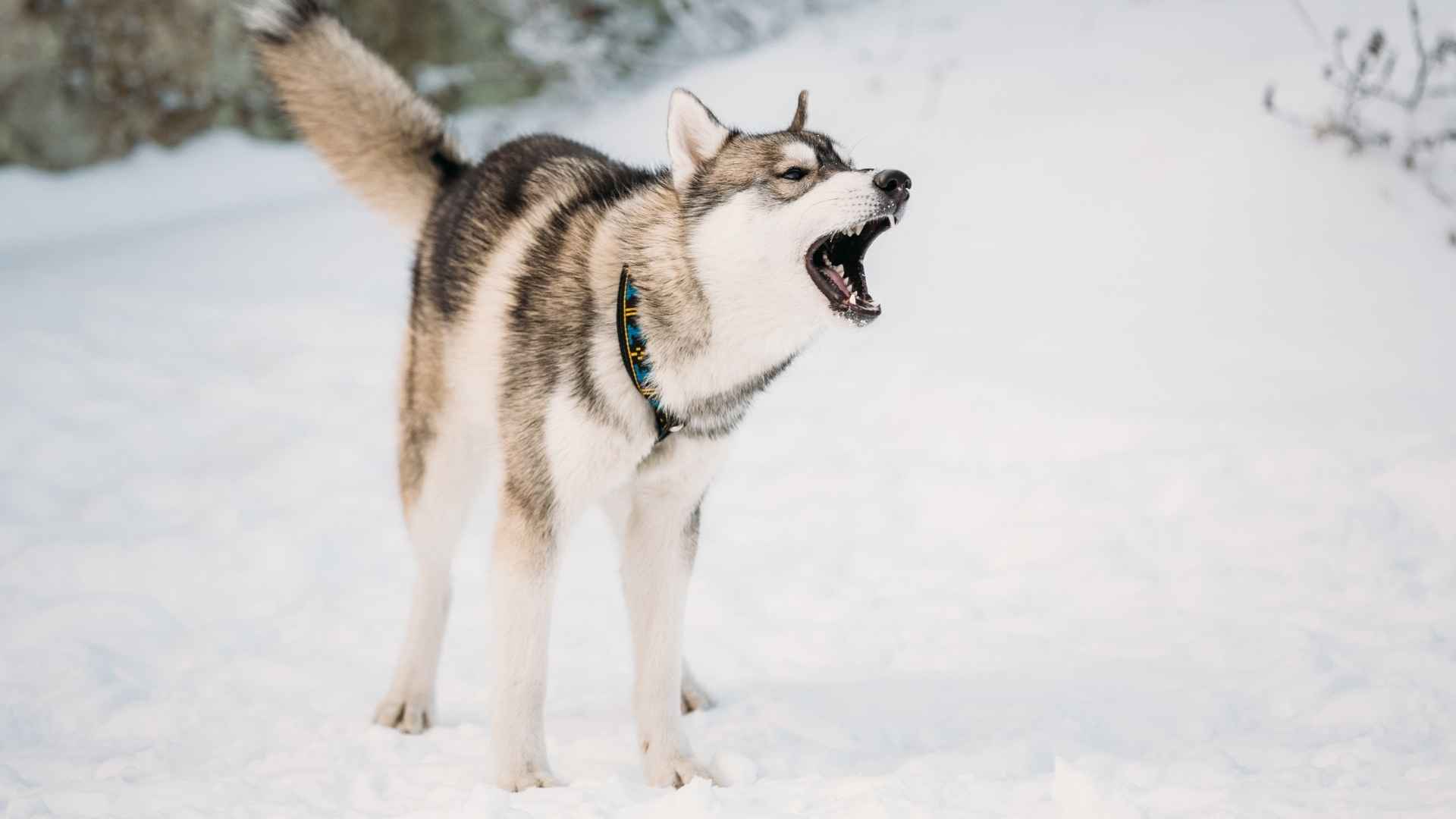Some dogs need a serious reason to bark—others just need a gust of wind or a passing leaf. If your pup sounds the alarm at invisible intruders, you’re likely living with one of the most vocal members of the canine world. While silence may be golden, for some dogs, barking is an Olympic sport—and they’re winning gold medals.
Certain breeds are natural-born watchdogs, equipped with hyper-alert instincts that make them react to every sound, shadow, or sneeze. While their constant vocal commentary might frustrate your neighbors or startle the mail carrier, these dogs bring unmatched energy, personality, and protection to the home. Their talkative nature is part security system, part comic relief, and entirely endearing, most of the time.
In this roundup, we’re spotlighting the most spirited barkers of the dog world. Whether you’re seeking a reliable alert dog or simply wondering why your pup reacts to a blowing curtain, these breeds offer insight—and plenty of volume. Buckle up, dog lovers—this is your front-row seat to the most vocal, alert, and unapologetically loud four-legged friends out there.
Very Alert Dog Breeds That Love To Bark
1. Chihuahua
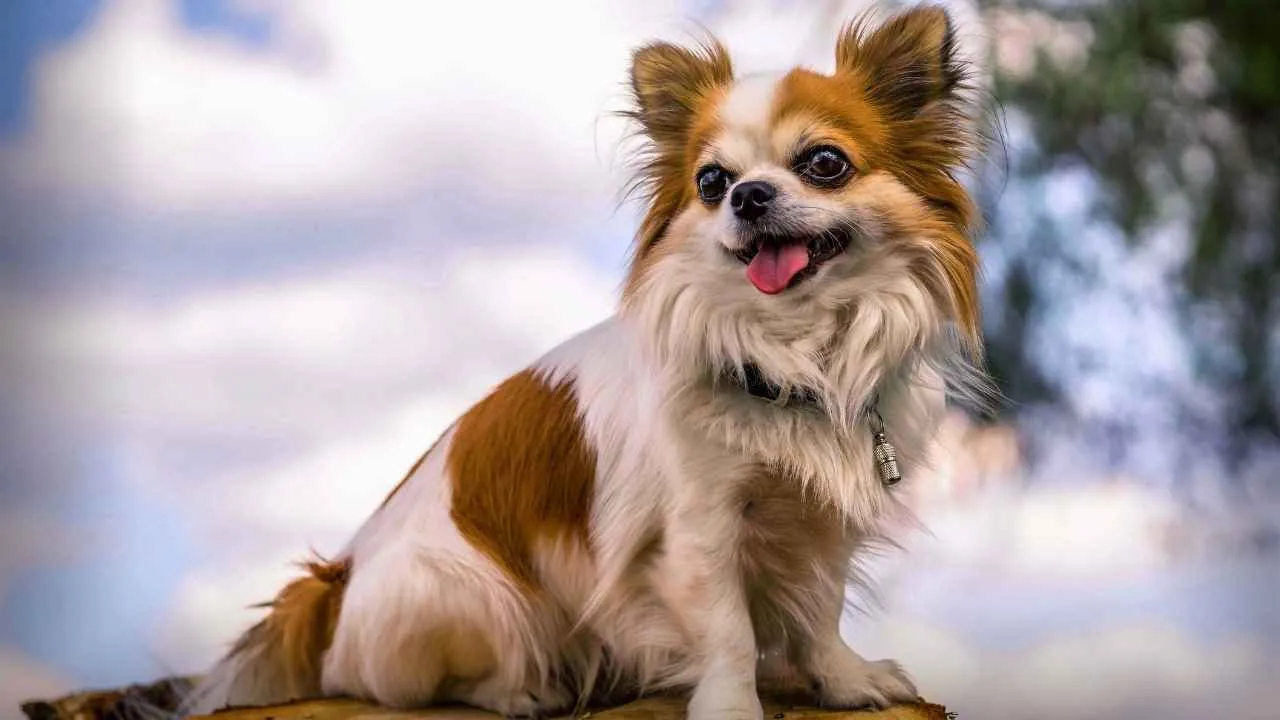
The Chihuahua—also fondly known as the “Chi”—is a pint-sized pup with a bold attitude. Hailing from Mexico, this breed dates back to ancient civilizations like the Toltecs and has become a symbol of spirited companionship.
Though standing only 5 to 8 inches tall and weighing up to 6 pounds, the Chihuahua makes a huge impression with its sharp alertness and expressive demeanor. Whether short- or long-coated, these tiny watchdogs come in a wide variety of colors and patterns.
Their round “apple” heads make them instantly recognizable. AKC says the erect ears and bright, expressive eyes convey strong emotion and alertness. They are loyal, sassy, and known for their confident, terrier-like presence despite their size.
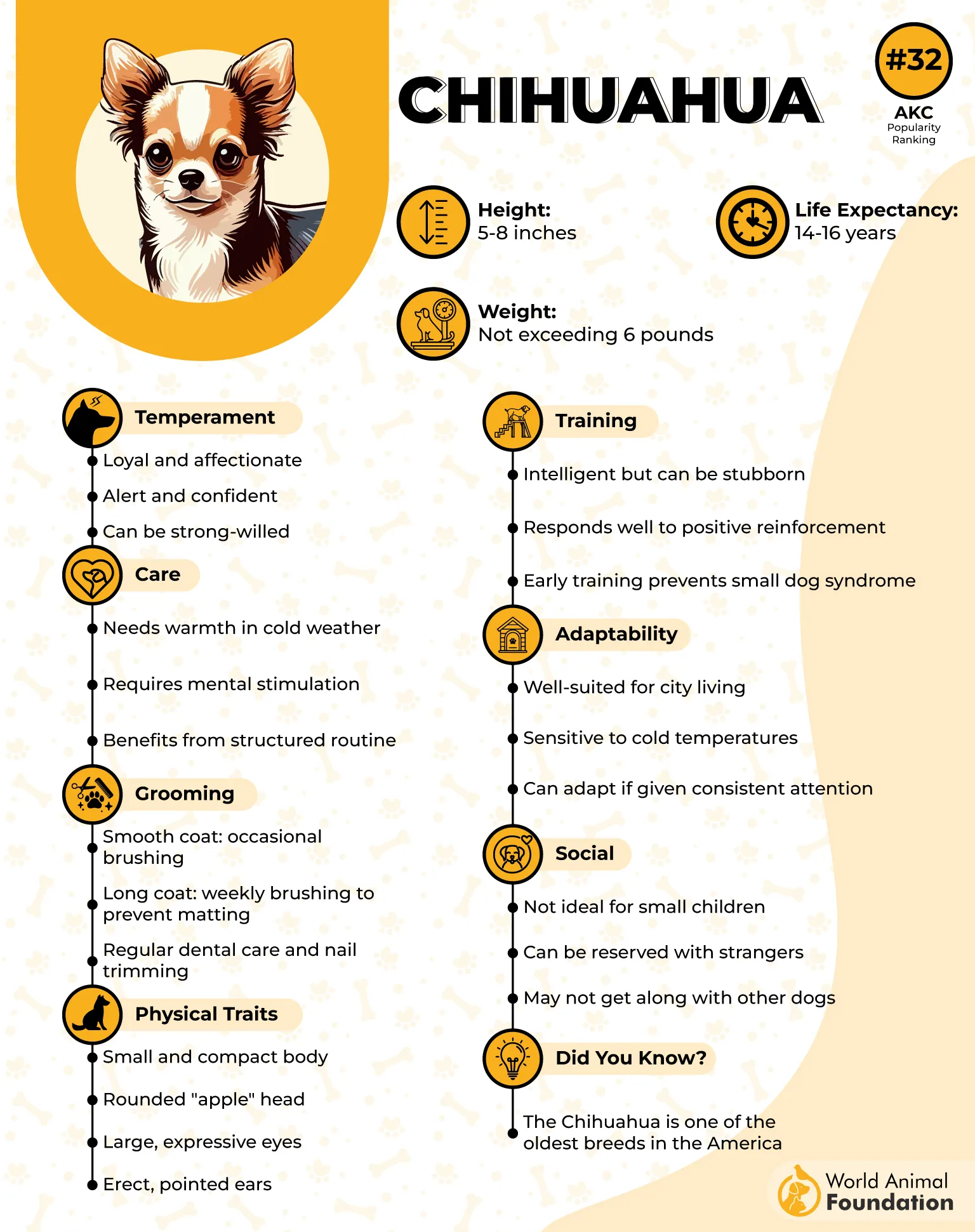
Care Needs
Chihuahuas require daily walks and interactive play to meet their high energy needs. While grooming is minimal, depending on coat length, dental care is a top priority—daily brushing helps prevent oral issues.
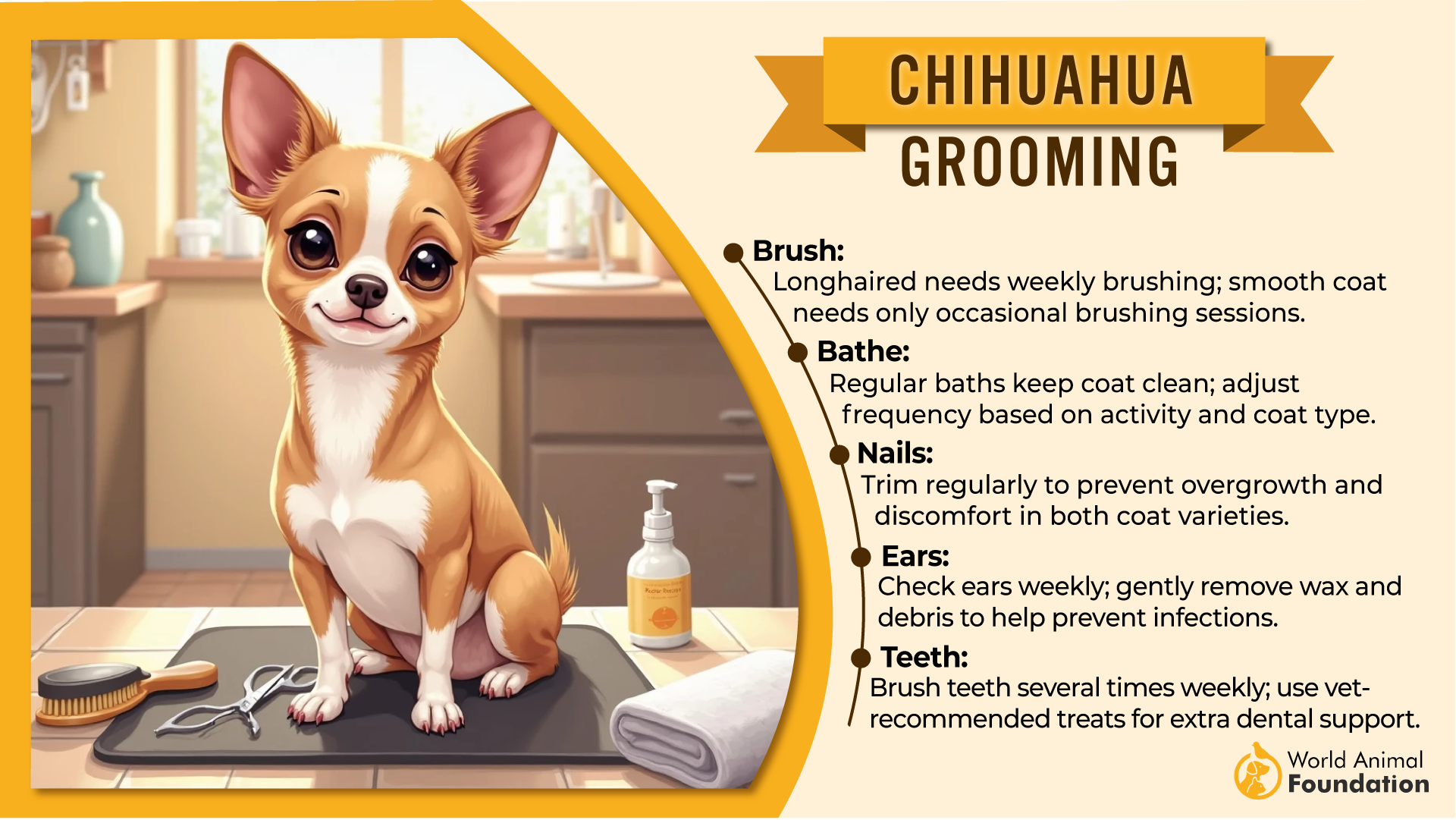
Because of their small size and strong personalities, close supervision around other dogs and children is essential to ensure safety and comfort.
Fact: In 2014, packs of loose Chihuahuas—caused by overpopulation—made headlines in Arizona, surprising locals with their fierce attitude despite their tiny frames.
2. Miniature Schnauzer
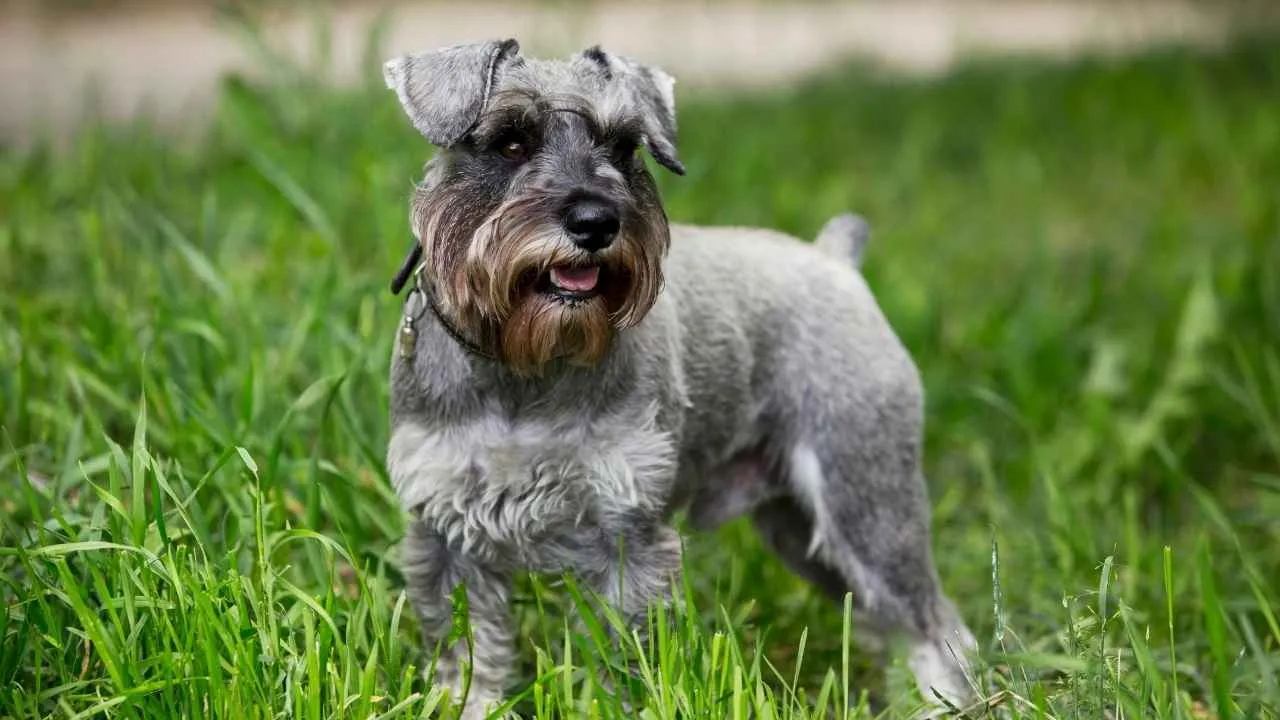
The Miniature Schnauzer, developed in Germany by crossing Standard Schnauzers with Affenpinschers and possibly Poodles, stands 12–14 inches tall and weighs 13–15 pounds. PetMD says the Miniature Schnauzer descends from a historic and hardworking German breed once used for pulling carts, herding livestock, and hunting rats.
Its trademark bristly beard, expressive eyebrows, and wiry coat—usually salt and pepper, black and silver, or solid black—give it a dignified, almost human-like appearance. Despite its refined looks, this breed is robust, agile, and known for its spirited bark.
Mini Schnauzers belong to the Terrier Group and typically live 12–15 years. They are excellent watchdogs, alerting their humans at the slightest sign of movement or noise. Ideal for both apartments and homes with yards, they adapt well to a variety of lifestyles and love to play with kids and other pets.
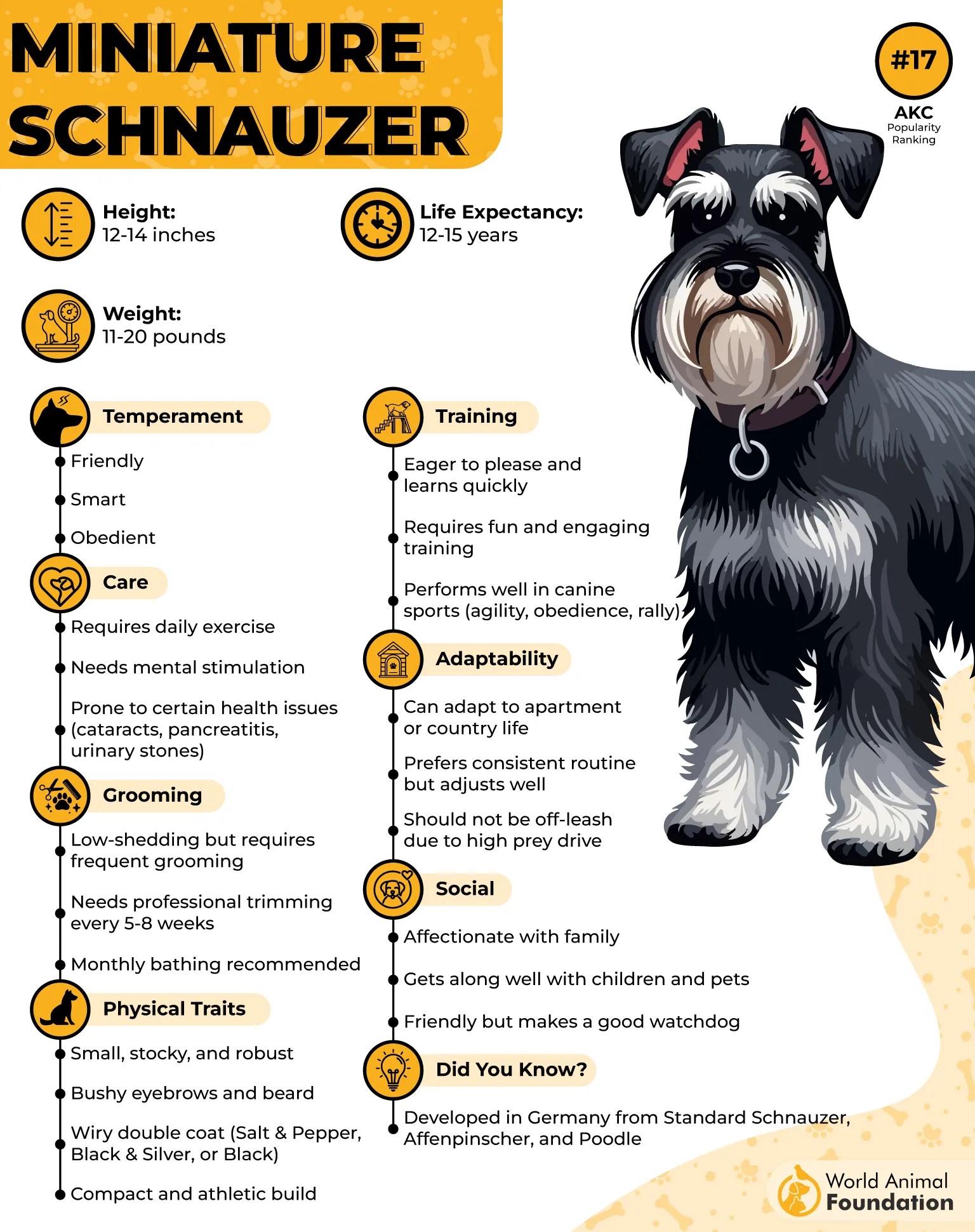
Care Needs
Miniature Schnauzers require consistent grooming to maintain their wiry coats, including regular brushing and professional trimming every few months. Ear cleaning, dental hygiene, and nail trimming are equally essential.
Though generally healthy, they are prone to breed-specific conditions like pancreatitis, diabetes, and eye disorders, so regular vet visits are crucial.
Fact: The name “Schnauzer” is derived from the German word for “muzzle,” a nod to their signature mustachioed face.
3. Siberian Husky

With a legacy rooted in the snow-covered expanses of Siberia, the Siberian Husky is a powerful, medium-sized working dog known for both its stamina and theatrical vocal range.
Originally bred by the Chukchi people for sled pulling, these dogs stand 20 to 24 inches tall and weigh between 35 to 60 pounds. Their thick double coat, almond-shaped eyes (which may be blue, brown, or one of each), and elegant, foxlike features give them a striking appearance.
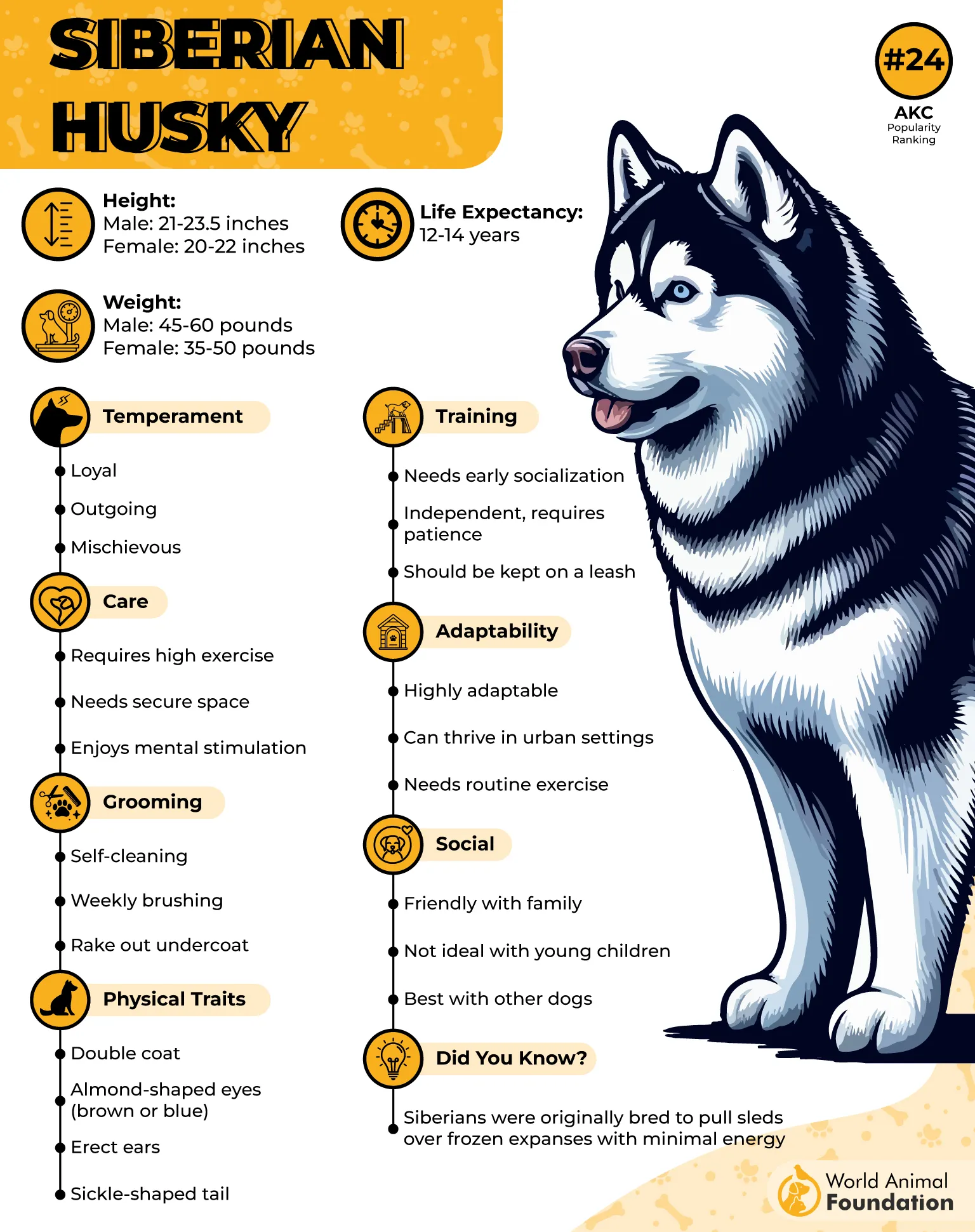
Friendly by nature, they’re more likely to sing for strangers than scare them off, making them one of the most expressive, chatty breeds in the canine world. WebMD says they are typically friendly with strangers and more inclined to greet them with a wagging tail than to bark.
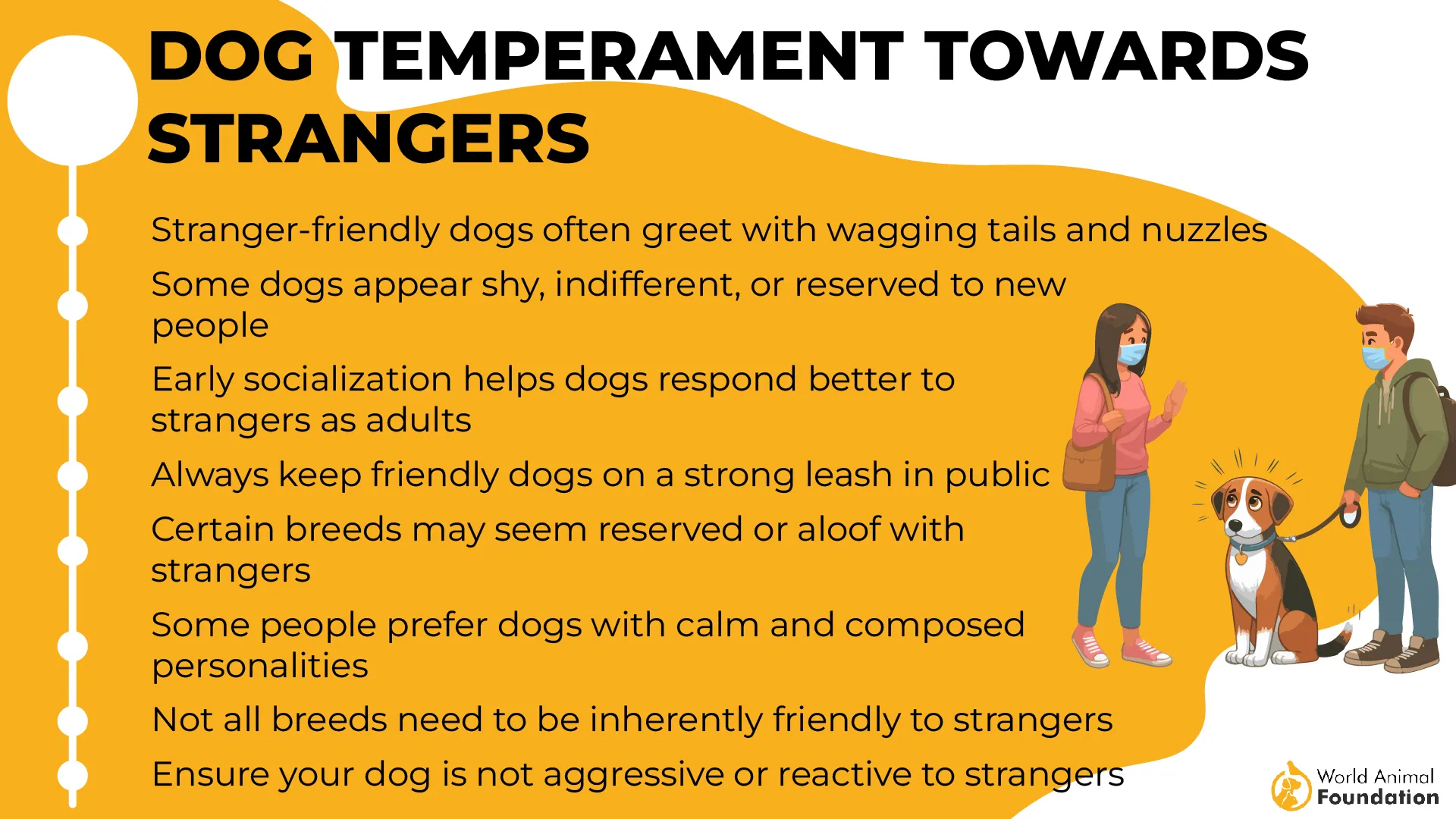
Care Needs
Huskies require a high level of daily exercise—at least 1-2 hours of physical and mental activity. Their intelligence means they need proper training and plenty of social interaction. While they’re clean and relatively odorless, they shed heavily and need regular grooming.
Due to their noisy nature, they aren’t ideal for apartments or quiet neighborhoods, but thrive in spacious, active households.
Fun Fact: The 1925 “Great Race of Mercy” to Nome, Alaska, made the breed famous, with Balto, a Siberian Husky, leading the final stretch of the life-saving serum run.
4. Dachshund
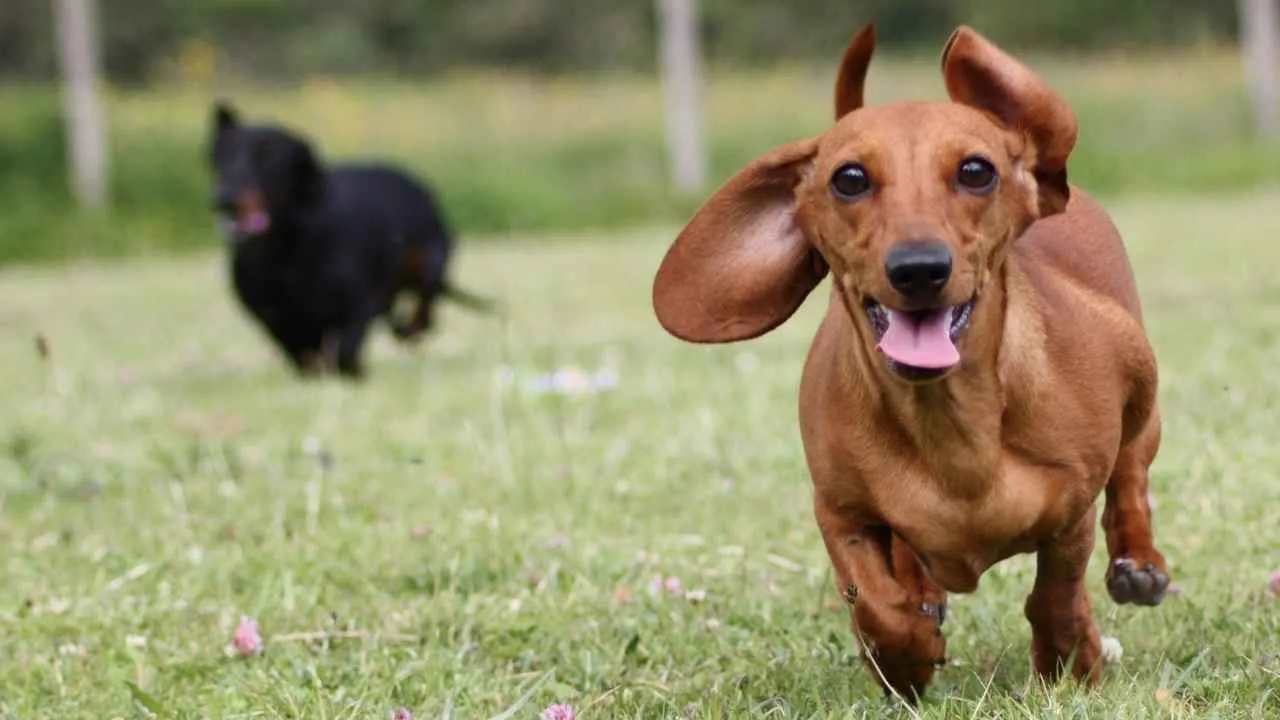
With its instantly recognizable long back, short legs, and proud, alert posture, the Dachshund—also affectionately known as the Doxie, Wiener dog, or Sausage dog—is a breed originally developed in Germany to track and flush out badgers. These small hounds come in two sizes: miniature (weighing up to 11 pounds) and standard (typically 16 to 32 pounds).
They also sport one of three coat types: smooth, longhaired, or wirehaired, with each variety having its own temperament. Doxies are known for their fearless nature, deep bark, and intense curiosity, traits that make them excellent watchdogs—even if their bark is often louder than their bite.

Care Needs
Dachshunds thrive with daily exercise—usually one to two walks per day—and plenty of mental stimulation to curb boredom-induced barking. Grooming needs vary based on coat type, but regular brushing and dental care are essential for all varieties.
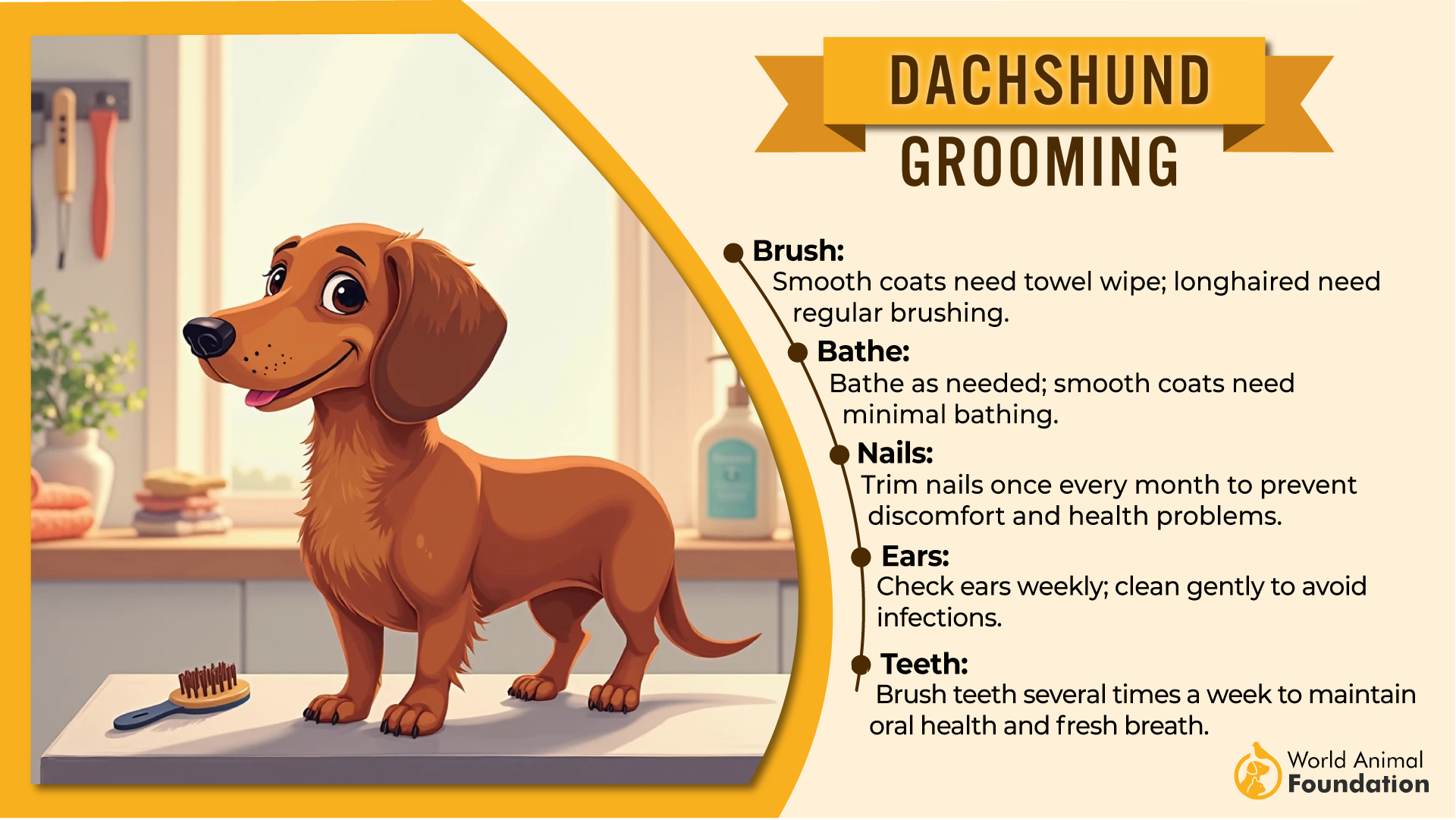
Due to their elongated spine, it’s important to avoid activities that involve excessive jumping. Always supervise them around stairs and teach children proper handling techniques.
Fun Fact: Pablo Picasso’s Dachshund, named Lump, appeared in several of the artist’s reinterpretations of Las Meninas by Velázquez.
5. West Highland White Terrier
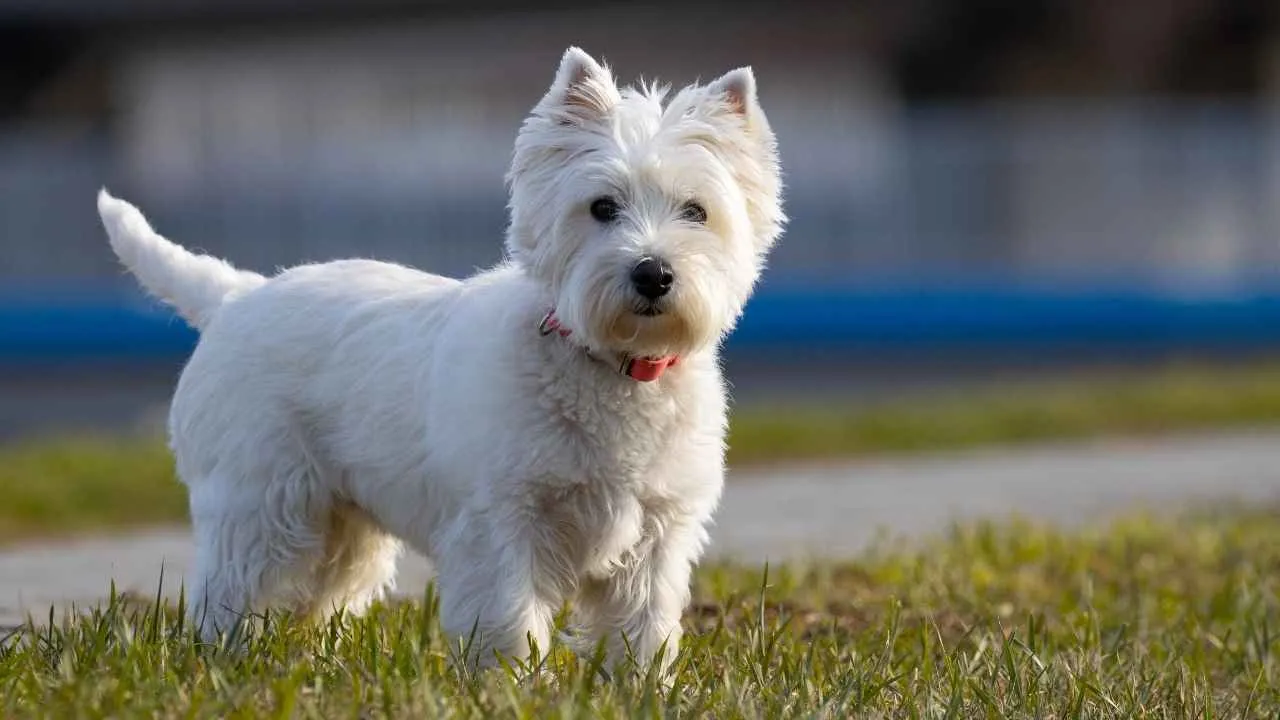
Originally bred in Scotland, the West Highland White Terrier, also known as the Westie, Roseneath Terrier, or Poltalloch Terrier, is a small but mighty watchdog with a big voice. Standing 10–11 inches tall and weighing 13–19 pounds, this feisty terrier is easily recognized by its pure white double coat, upright ears, and signature carrot-shaped tail.
With a sturdy build and bold personality, Westies have long been admired for their confidence and hunting instincts—traits that make them particularly vocal when something piques their curiosity.
A member of the Terrier Group, the Westie lives an average of 12–16 years. Known for their intelligence and independence, these pint-sized pups are remarkably alert and are quick to bark at any unfamiliar sound or movement, making them reliable household sentinels.
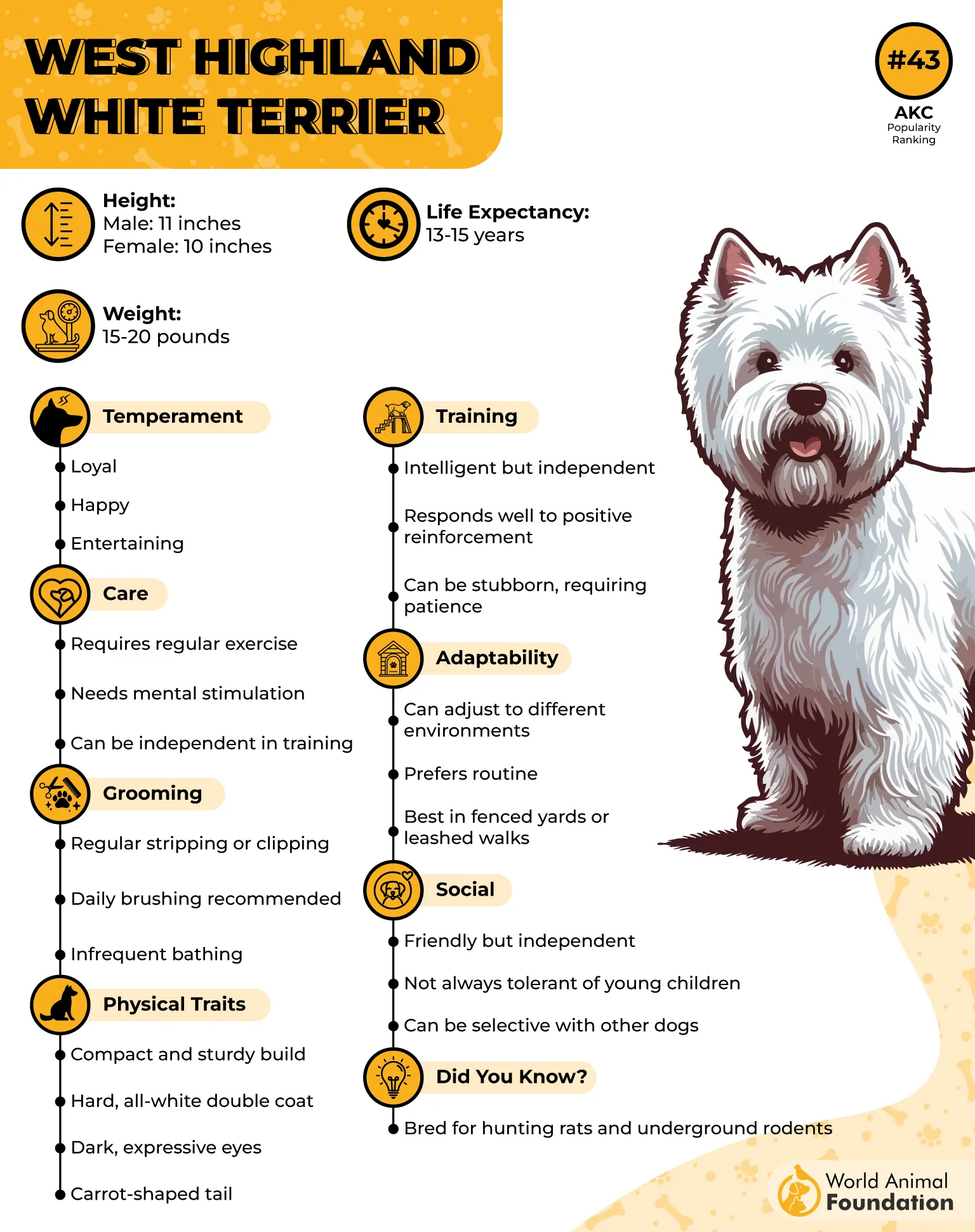
Care Needs
These small dogs need weekly brushing to maintain their coarse white coat and should visit a professional groomer every 4 to 6 weeks for trimming.
Regular exercise and mental stimulation are crucial, as boredom can lead to destructive behaviors. Without enough engagement, their high energy may become challenging to manage.
Fact: Despite their plush appearance, these intelligent dogs are true working terriers—brave, independent, and always ready to bark at what they believe needs addressing.
6. Smooth Fox Terrier
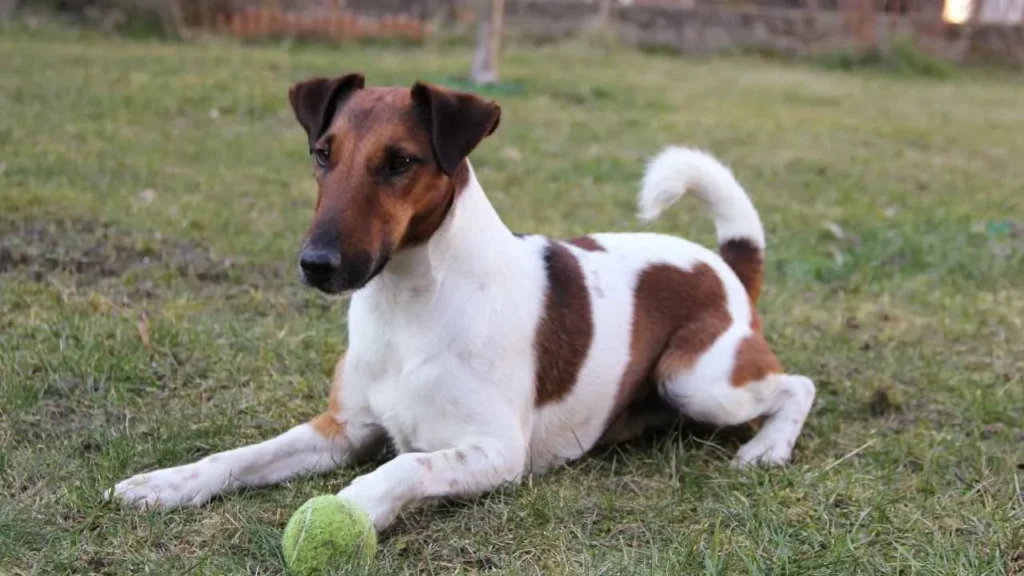
With roots in British foxhunting, the Smooth Fox Terrier is a spirited, sharp-eyed companion known for its bold personality and boundless energy. Standing about 15 inches tall and weighing between 16–18 pounds, this terrier boasts a short, dense, predominantly white coat with black, tan, or black-and-tan markings.
Its distinctive V-shaped head and sleek body grant it a lively, balanced appearance. Developed from breeds like the beagle, bull terrier, greyhound, and smooth-coated black-and-tan terrier, the Smooth Fox Terrier is a true dynamo among vocal watchdogs.
Care Needs
Though they’re considered low-maintenance in grooming—with only weekly brushing needed—Smooth Fox Terriers demand high mental and physical stimulation. A minimum of 1–2 hours of daily activity, including fetch, agility, and brisk walks, helps keep their alert minds and active bodies satisfied.
Early socialization and training are key to channeling their sharp instincts and high energy into positive behavior. Regular dental care is essential, as they are prone to dental issues.
Fun Fact: Smooth Fox Terriers are known for their animated expressions and high-pitched bark, making them exceptionally alert and vocal, ideal for keeping tabs on any movement around the house.
7. Bloodhound

One of the oldest and most celebrated scent hounds, the Bloodhound—also known as the St. Hubert Hound or Sleuthhound—has a noble lineage dating back to ancient Europe, with refinements made by monks in medieval Belgium.
Originally bred for tracking, this large and expressive breed is easily recognized by its long, wrinkled face, massive drooping ears, and soulful, deep-set eyes.
Standing between 23 and 27 inches tall and weighing up to 110 pounds, the Bloodhound boasts a short, easy-care coat in black and tan, red, or liver and tan.
Known for their signature bay and deep bark, Bloodhounds are vocal by nature, especially when intrigued or excited by scents. They belong to the Hound Group and live roughly 10–12 years.
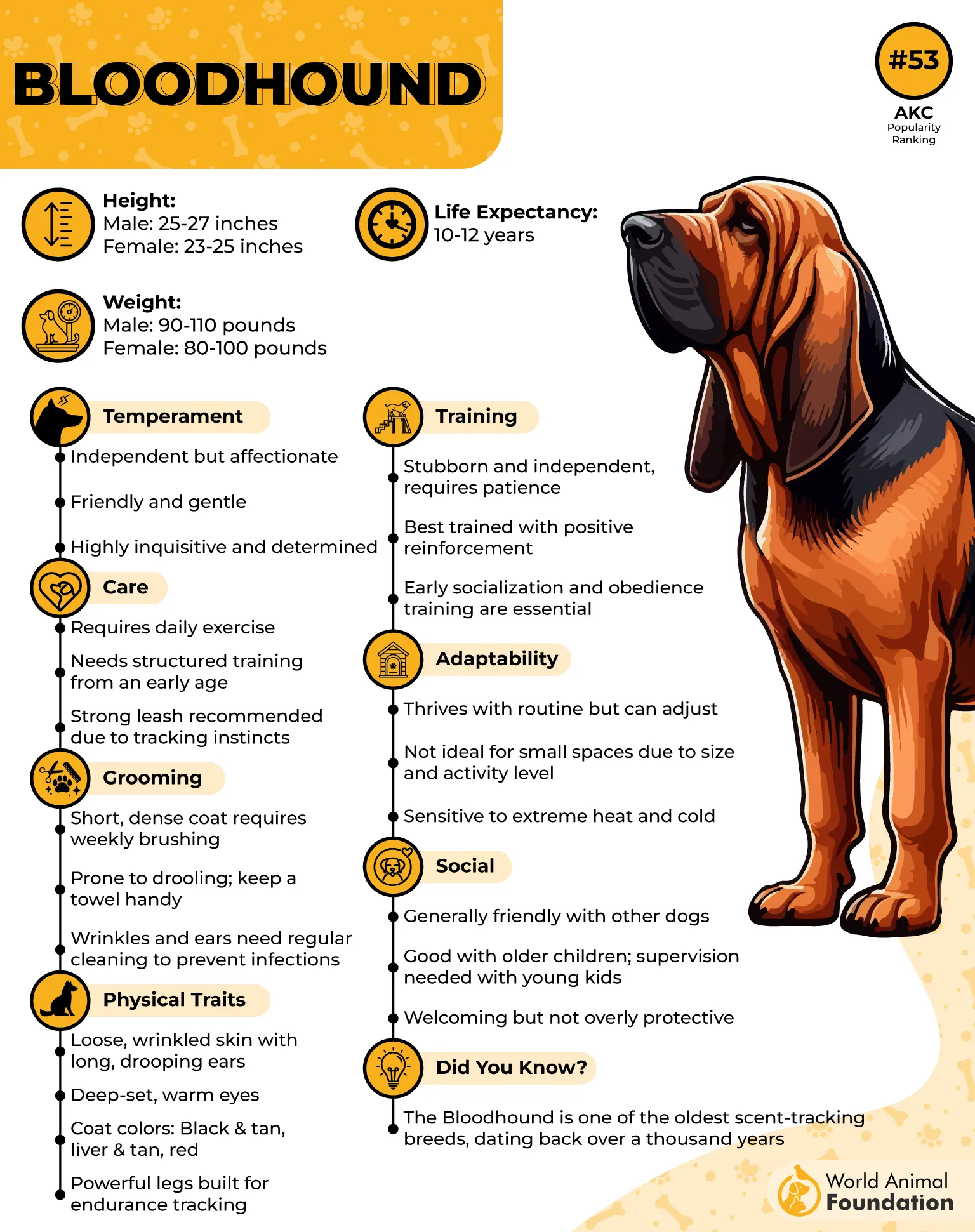
Care Needs
Bloodhounds are high-maintenance when it comes to physical activity. Their tracking instincts demand daily stimulation, including long leashed walks and supervised free sniffing. Grooming is minimal, though their signature ears require regular cleaning to prevent infection.
Their sensitive skin and drooling tendencies also mean a bit of daily cleanup. These pack dogs thrive in social homes with patient, experienced owners.
Fun fact: A Bloodhound’s scenting ability is so reliable that its findings have been used as evidence in courts of law.
Conclusion
Some dogs seem to be born with an ear to the ground and a bark at the ready, making them natural standouts among the loudest dog breeds. These very alert pups—whether it’s a vigilant Belgian Malinois, a feisty Yorkshire Terrier, or a devoted guard dog—use their distinct bark not just as noise, but as communication. For animal lovers who appreciate these protective instincts, it’s a reminder that what may sound like excessive barking often stems from loyalty and awareness.
From the curious Cairn Terrier to the deep-voiced Basset Hound and even the spirited Alaskan Malamute, these breeds bring both personality and purpose to the home. Their attentiveness can deter intruders, alert you to changes in the environment, or simply keep life interesting. Whether you’re looking for a watchful companion or a furry family member who thrives on interaction, these vocal breeds prove that a little noise can mean a lot when it comes from the heart of a devoted dog.


